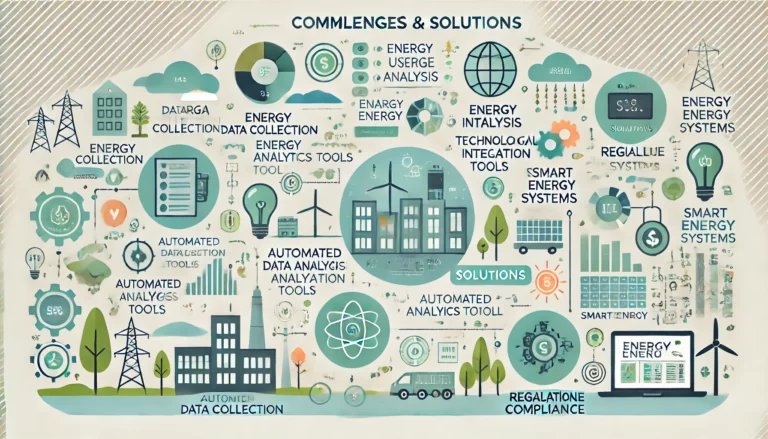In today’s world, the push for sustainable energy is stronger than ever. As we strive to reduce our carbon footprint and minimize energy consumption, one of the most effective tools at our disposal is energy auditing. However, to truly understand and improve energy efficiency, benchmarking is essential. This blog post will delve into the importance of benchmarking in energy auditing, highlighting its role in promoting sustainable energy practices.
What is Benchmarking?
Benchmarking is the process of comparing a building’s energy performance against a standard or best practice. This comparison helps identify areas where energy efficiency can be improved. Benchmarking provides a clear picture of how a building’s energy usage stacks up against similar structures, allowing for targeted interventions that can significantly reduce energy consumption.
The Role of Energy Auditing
Energy auditing involves a comprehensive assessment of a building’s energy use, identifying areas where energy is being wasted and recommending improvements. It’s a critical component of any sustainability strategy, helping to pinpoint inefficiencies and develop actionable plans to address them. Without proper benchmarking, however, the data collected during an audit may lack context, making it difficult to measure progress or identify the most impactful changes.
Benefits of Benchmarking in Energy Auditing
Benchmarking in energy auditing offers numerous benefits:
- Performance Tracking: By regularly benchmarking energy usage, organizations can track their performance over time, identifying trends and areas for improvement.
- Identifying Inefficiencies: Benchmarking highlights where a building’s energy use is higher than average, pointing to specific areas that need attention.
- Setting Goals: With benchmarking data, it’s easier to set realistic and achievable energy reduction goals.
- Improving Building Operations: Detailed benchmarking reports can lead to better management practices and operational improvements.
- Cost Savings: Ultimately, identifying and addressing inefficiencies can lead to significant cost savings on energy bills.
- Regulatory Compliance: In many regions, benchmarking is required by law, helping ensure compliance with local energy regulations.
How to Implement Benchmarking in Energy Auditing
Implementing benchmarking in energy auditing involves several key steps:
Step 1: Data Collection
The first step is to collect accurate and comprehensive energy data. This includes information on electricity, gas, water, and other utilities, as well as operational details such as occupancy and usage patterns.
Step 2: Choose a Benchmarking Tool
Several tools are available for benchmarking energy use, including the U.S. EPA’s ENERGY STAR Portfolio Manager, which allows you to compare your building’s energy performance with similar buildings nationwide. Choosing the right tool depends on your specific needs and the type of data you have available.
Step 3: Analyze the Data
Once the data is collected, it’s time to analyze it. This involves comparing your building’s energy use against the chosen benchmarks to identify areas of inefficiency. The analysis should consider factors such as weather, building size, and occupancy to ensure an accurate comparison.
Step 4: Develop an Action Plan
Based on the benchmarking analysis, develop an action plan to address identified inefficiencies. This plan should include specific, measurable goals and a timeline for implementation. It might involve upgrading equipment, improving insulation, or changing operational practices.
Step 5: Monitor and Adjust
After implementing the action plan, continue to monitor energy usage and compare it against benchmarks. This ongoing process ensures that improvements are effective and identifies new areas for further enhancement.
Case Studies: Benchmarking in Action
To illustrate the impact of benchmarking in energy auditing, let’s look at a few real-world examples:
Case Study 1: Office Building in New York
A large office building in New York City used the ENERGY STAR Portfolio Manager to benchmark its energy use. The initial benchmarking revealed that the building was using significantly more energy than similar buildings. By implementing a series of energy-saving measures, including upgrading HVAC systems and improving insulation, the building reduced its energy use by 25% over three years, resulting in substantial cost savings and a lower carbon footprint.
Case Study 2: Hospital in California
A hospital in California conducted an energy audit and used benchmarking to compare its energy use with other hospitals. The benchmarking data highlighted several inefficiencies, including outdated lighting and poor insulation. By addressing these issues, the hospital was able to reduce its energy use by 30%, saving millions of dollars annually and improving patient comfort.
The Critical Role of Benchmarking in Sustainable Energy Practices
Benchmarking is a critical component in the pursuit of sustainable energy practices. By providing a clear, data-driven view of a building’s energy use, benchmarking enables organizations to identify inefficiencies and implement targeted improvements. This process not only enhances energy efficiency but also leads to significant cost savings and environmental benefits. For any organization committed to sustainability, integrating benchmarking into energy auditing is essential.
Conclusion
In conclusion, benchmarking is an indispensable tool in the field of energy auditing. It provides the necessary context to understand energy use patterns, identify inefficiencies, and set realistic goals for improvement. By leveraging benchmarking, organizations can achieve significant energy savings, reduce their environmental impact, and move closer to their sustainability goals. Whether you’re managing a single building or an extensive portfolio, incorporating benchmarking into your energy auditing process is a step towards a more sustainable future.
Call to Action
Ready to take your energy auditing to the next level? Start by benchmarking your building’s energy use today. Use tools like the ENERGY STAR Portfolio Manager to get started, and see the difference benchmarking can make in your journey towards sustainability. For more information on energy auditing and sustainable energy practices, contact us at Bobbing in Petroleum. Let’s work together to create a greener, more efficient future.
References
- U.S. Environmental Protection Agency. ENERGY STAR Portfolio Manager.
- Case studies and real-world examples from industry leaders in sustainable energy practices.





